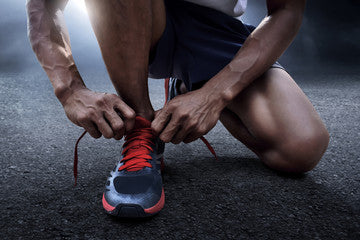Thu, Dec 10, 20 Travis Geopfert
16-Apr-2021 By Travis Geopfert
How to Train for the Decathlon and Heptathlon
Training for the decathlon and heptathlon is very challenging. My name is Travis Geopfert, and I've competed in 54 decathlon's in my career as well as coached countless others along the way. I started my collegiate coaching career as a graduate assistant at the University of Central Missouri under the tutelage of Olympic decathlete, Kip Janvrin. I then went back to my alma mater, the University of Northern Iowa as a collegiate coach for 6 years, and I have now been an assistant track and field coach at the University of Arkansas for 9 years. These are all track and field programs that are passionate about the decathlon and the heptathlon.
There are a couple of key points that athletes and coaches need to keep in mind when training for the decathlon and heptathlon. Athletes and coaches need to look at ‘complementary’ events and ‘sequential’ events, both of which are important aspects of training for the decathlon and heptathlon properly.
Complementary events are events that have similar rhythms, often times these are events that are trained on the same day. An example of these events would be the hurdles and the long jump. Possibly, there is a hurdle session where the hurdles are ‘jammed’ while focusing on quick, rapid fire movements and the same quick ‘1-2-3’ movements at the end of a long jump drill. These are two events that are going to ‘complement’ each other in an athletes training.
A sequential event would be an event that follows each other in the decathlon and/or heptathlon. In the heptathlon, for example, an athlete might do high jump training drills immediately followed by drills in the shot put. In the decathlon, an athlete may do a discus workout immediately followed by pole vault training. These are two events the are ‘sequential’ in an athletes training.
A critical component of training that athletes and coaches cannot forget about in the decathlon and heptathlon training... are the running workouts. Athletes need to be fast, they need be strong, and they need to be in great shape. Often times athletes try to train as a 400-meter runner for the decathlon. Training as a 400-meter runner in the decathlon does a the following: It gives an athlete the speed needed for the hurdles, for the 100m dash, for the long jump, and of course, the 400 meter dash as well as the strength needed to get through the interval workouts for the 400 meter dash and a 1500 meter run. And of course, it trains the athlete to be in great shape to endure 10 events over the course of two days. In heptathlon training, athletes often focus on 200m speed, which will help with the speed needed in the hurdles and the long jump. Also, this interval training is going to give an athlete the strength needed to run a great 800 meters, and again, endure 7 events over the course of two days.
What is really cool about Trackwired training programs is that an athlete or coach can type in a specific goal for the 400 meter dash in the decathlon and for the 200 meter dash in the heptathlon, and the training plan is going to lay out all of interval training times in every running workout, specific to that goal time. The other invaluable feature that Trackwired training plans provide is a 30 second to two minute video that shows exactly how to perform every prescribed drill throughout each day of training. Right in the palm of a hand, right at the track, athletes and coaches can see exactly what is to be focused on, every single day, in every drill, for every event.
We're excited that you're looking to develop in the decathlon and heptathlon, and we sincerely hope that we can help you reach all of your goals in your upcoming training.



Leave Comment